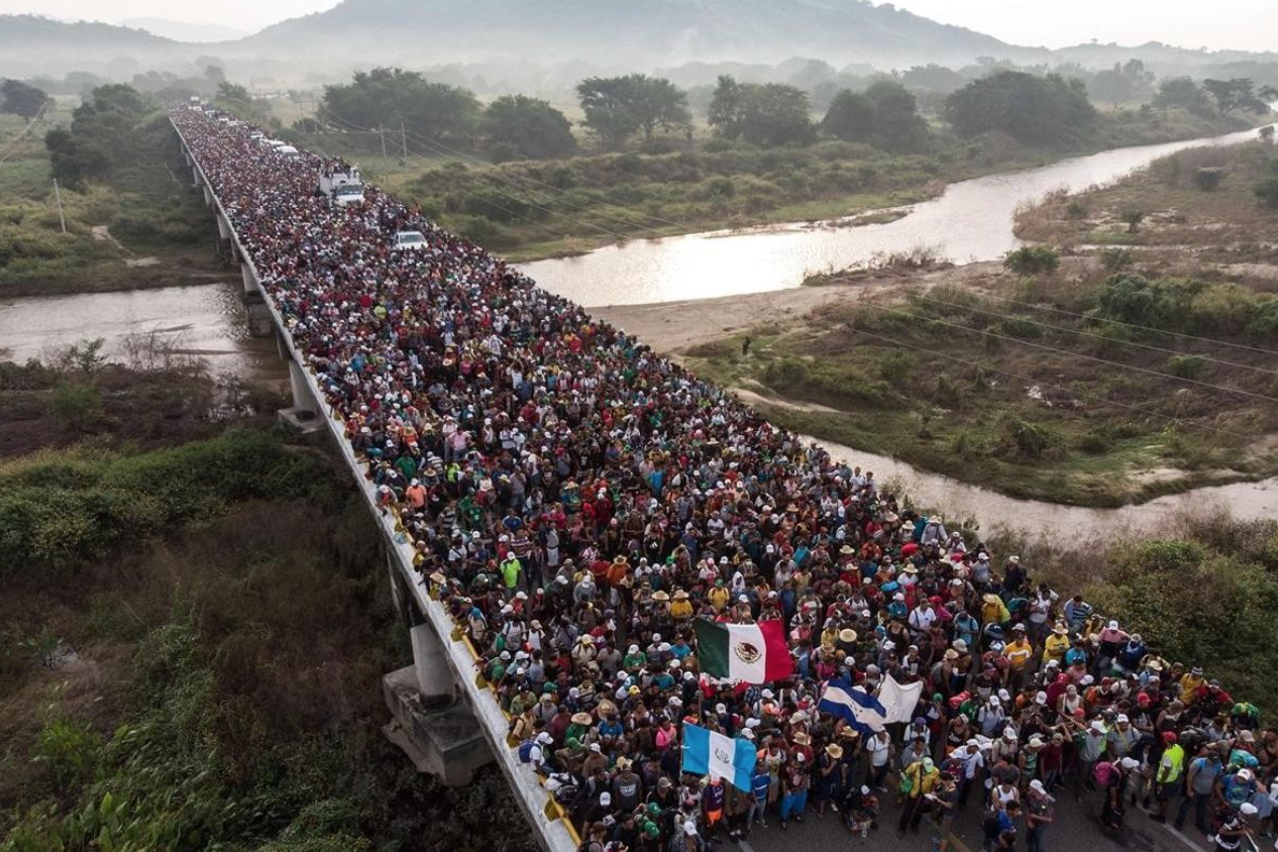Co-author Jonathan D. Rosen / Latinoamérica21
Each year, tens of thousands of migrants arrive at the U.S.-Mexico border after traveling nearly 4,000 kilometers from different Central American countries. Between 1990 and 2010, the number of Central American immigrants in the United States nearly tripled, growing at a faster rate than any other subregion in Latin America. Today, the United States courts have nearly 1.4 million cases in the system, which are dominated by citizens from the three main countries of origin: Mexico, El Salvador and Guatemala.
The growing number of migrant “caravans” to the United States illustrates the wide range of challenges facing many Latin American countries, including poverty, gangs, drug trafficking, corruption and environmental disasters such as droughts, floods and hurricanes. But the danger continues even after they leave their respective territories. In 2020 alone, at least 157 migrant deaths were recorded in Central America and along the U.S.-Mexico border.
In this context, what factors affect the decision of thousands of people from countries such as Mexico, El Salvador and Guatemala to undertake the difficult journey to the United States? Why does undocumented immigration continue to grow despite its risks?
Mexico, El Salvador and Guatemala
In our research article published by the International Journal of Comparative and Applied Criminal Justice, we used data from Vanderbilt University’s Latin American Public Opinion Project (LAPOP) to learn about the most relevant “push factors” in Mexico, Guatemala and El Salvador, the three main countries of origin of Latin American migration to the United States.
The research reveals that the profile of people seeking to live or work in another country is consistent with the general patterns of international economic migration: young men with pre-existing ties to immigrants with residence in the destination country who believe that the wage levels of their family group have worsened.
However, in countries with high rates of criminal violence, economic push factors alone do not explain migration movement. In Mexico, Guatemala, and El Salvador, territories with a strong presence of gangs, organized crime and violence, being a victim of crime significantly increases the likelihood of migration.
Perceptions of insecurity, especially in the two Central American countries, also affect the decision to live in the United States. In other words, both victimization and fear of crime play a preponderant role in the calculus to emigrate from countries with criminal organizations such as maras or drug cartels.
Implications of migration in the United States
On the other hand, in the United States, where debates over undocumented residency have regained momentum, immigration policy continues to be inadequate to dissuade people from Latin American countries with high rates of violence from making the journey to seek new opportunities.
Specific initiatives such as the opening of new detention centers, the separation of undocumented children from their families, the militarization of borders, and continued attempts to end Deferred Action for Childhood Arrivals (DACA) may even exacerbate existing security problems in Latin America, fueling the demand for citizens of the region to escape violence.
Considering the nature of the United States immigration policy, the implications of our research are not irrelevant. On the one hand, the centrality of victimization and fear associated with crime suggests that migration flows are likely to continue unless human security becomes a priority in countries riddled with gangs, organized crime and violence.
While addressing economic hardship in communities of origin is imperative, insecurity appears to have an independent effect on the emigration calculus of people from Mexico, El Salvador, and Guatemala.
On the other hand, as discouraging as it may be to U.S. authorities, migration can even be intensified if considered the underlying conditions that foster crime or economic hardship in the region. This is because having a friend or relative in the United States increases the likelihood of living or working abroad. Thus, migration can become self-sustaining regardless of the actions of criminal organizations such as the Salvatrucha and Barrio 18 maras or the Sinaloa and Jalisco New Generation Mexican cartels.
Jonathan D. Rosen is Assistant Professor in the Department of Security Studies at New Jersey City University (United States). D. in International Studies from the University of Miami and M.A. in Political Science from Columbia University. He specializes in organized crime, gangs, violence and security.
Translated from Spanish by Janaína Ruviaro da Silva











